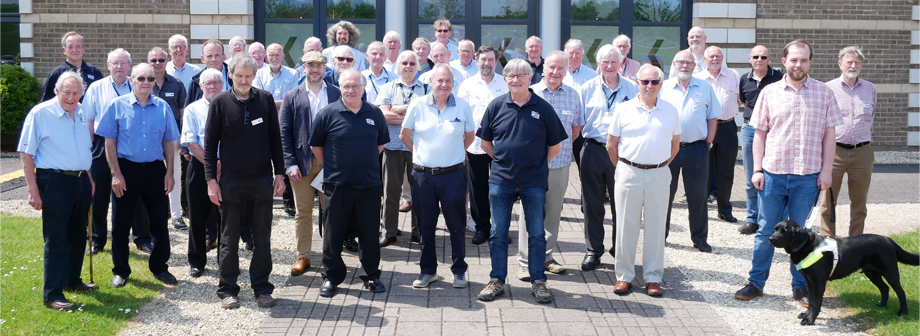A Volunteers view
On 25 March, several volunteers attended a new
Museum initiative, a one day series of lectures, open to the public, devoted to
the future of the British Motor Industry.
Five well-respected and industry-leading professionals gave an overview
of where the British car industry is today, how it got there and how they
expected it to evolve over the coming years. Volunteer Ian Hicks played a
significant role in organising the event as he described in our previous blog. Here
he now gives his scenario on what that future might look like in 40 years time:
Spring 2057
Stephen gets into his L segment personal transport, ready
for his drive into work. The journey will take him around 30 minutes each way,
apparently, the same amount of time people used to commute to work 100 years
ago. Whilst he prepares to drive off, he
reflects that the 1990’s phenomenon of telecommuting and virtual offices never
really materialised. People still needed to travel to their places of work,
they still needed to interact with people and things.
His personal transport, the latest Changhong model, built in
Coventry, is a single seater. Despite its battery and electric drives, it
weighs in at a mere 150 kg and has a range of 150 miles before it needs
recharging. This is perfect, since 98% of his journeys are 50 miles or less. On
the occasions Stephen wants to take the family out for weekend trips or
holidays, he contacts Changhong from his “connected car” and they arrange a
family size electric vehicle as part of his “servicisation” package. There’s no
longer the need to purchase or contract hire the largest vehicle to suit all
needs.
Checking the controls of his personal transport, he selects
the FOHOBO controller for his commute. This is a recent innovation, where he
can select “Feet-Off” where the car controls speed and braking only; or
“Hands-Off” where the car controls position and direction or “Brain-Off” where
the car operates in fully autonomous mode.
On his way to the Motor Museum, where he is curator, the
speed of his car is controlled by smart loops set into the road, relaying speed
information to the car’s controller. Despite more autonomy in controlling cars,
there are still strict speed limits in place, mainly to protect pedestrians,
cyclists and those drivers still not using fully autonomous cars. Even though
cars have been in use in Britain for over 150 years, there’s only been one
four-year period, 1930 to 1934 when drivers and their cars have not had to
comply with speed limits.
Stephen contemplates his latest acquisitions for the Museum’s
collection; it’s a 2025 Jaguar G type, a fully-electric vehicle and the last
model ever produced at Castle Bromwich. The car is in lovely condition, and the
crew at the museum will be able to maintain the mechanical components and even
the electric drives. However, the
software controllers for the FOHOBO and environment connectivity are no longer
made and with over 10 million lines of software are beyond the skills of his
support crew and challenge even the most dedicated software developers, who are
a dying breed these days.
Stephen Laing
(Curator) far left and the panel of leading industry experts
Tata were one of the winners in the so-called Brexit impacts
when UK distanced itself from the European car market. The Brexit negotiations resulted in high
tariffs imposed on UK produced cars being sold in Europe but strong demand in
the other regions of the globe meant that the Jaguar brand was able to sustain
its market position. It was a pity about Europe, but in common with other
manufacturers, Tata needed to produce vehicles that complied with global
specifications, producing cars with regional variations meeting local
specifications wasn’t good business. The success of Tata and others with UK
manufacture was to be applauded, but UK was still only the 13th
largest producer in the world…. Exactly the same position as it occupied in 2017.
As he arrived at the Museum, he thought back to something
he’d read recently in the Museum archives. Back in March 2017, a British MP,
Sir Greg Knight had advised Museum attendees that now’s the time to buy and own
a classic. How prophetic Sir Greg was. Since then legislation, environmental
concerns and the wholesale replacement of petrol stations with supermarket
charging points meant that internal combustion cars were no longer viable, even
on the shortest journeys. Of the 500 cars in the collection, this meant that
over 350 were genuinely just museum pieces……. But that didn’t seem to stop the
public being really interested in this transport of yesteryear.

